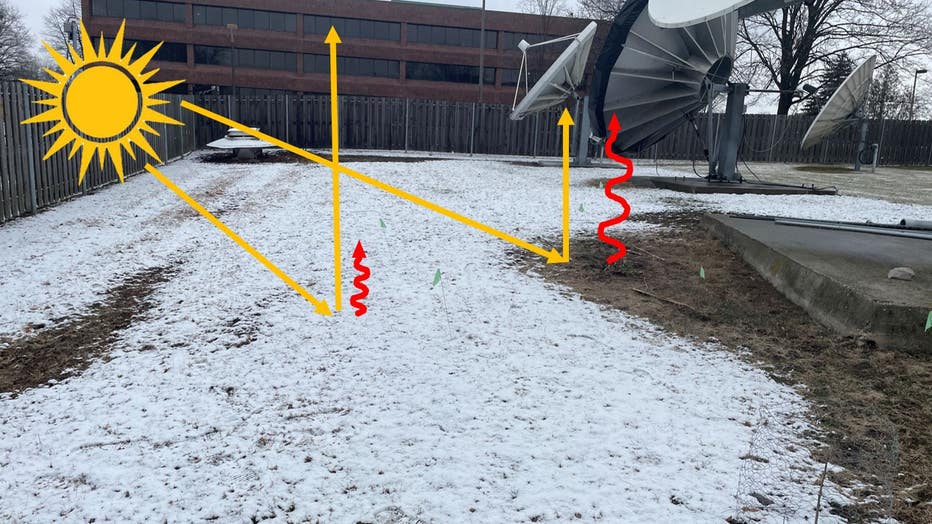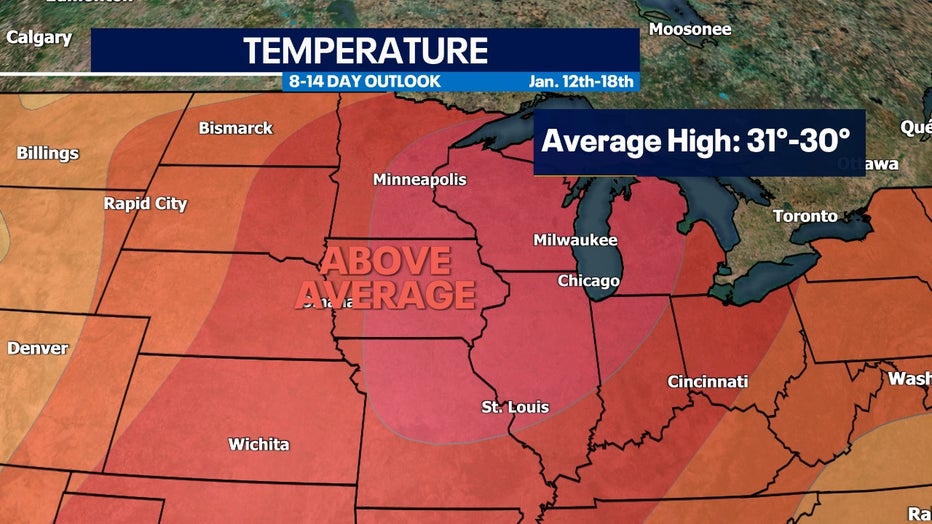Snowless ground, Wisconsin temperatures could be warmer than average

Snow has been hard to come by these last few months, and without decent snow cover it can actually make our temperatures warmer in southeastern Wisconsin.
If you've ever walked outside on a sunny day after a fresh snowfall, you've probably been blinded by what seems like billions of tiny little mirrors. In reality that's not far from the truth. Snow is incredibly efficient at reflecting light and can reflect as much as 80-98% of the sun's energy. Grass, dirt, water and other colored surfaces reflect the sun's rays – but not nearly as efficiently. This results in those surfaces absorbing the sun's energy and then re-emitting it as heat. How much a surface reflects the sun is known as "Albedo."
You can notice this phenomenon around trees, homes and sidewalks which melt off surrounding snow faster than areas out in the middle of your yard. For this reason, blown up to the scale of the entire state, without snow, Wisconsin can warm up much more rapidly in winter.

The color of surfaces can impact how quickly they warm up drastically comparing snow to bare ground
This month is a great example. Large-scale air masses will dictate temperatures the most, but, on top of snowless ground, this can amplify already above-average temperatures. As we enter our typical coldest period of the year, we're likely to be seeing above-average temperatures that usually sit between 31-degree and 30-degree afternoon highs.

Temperature outlook for Midwest from January 12th through January 18th
If this trend lasts through the end of January, this could easily be the warmest January on record. The current warmest January was in 2006 with an average temperature of 34 degrees, but so far for January 2023, our average temperature has been 38.8 degrees with plenty of the month to go. It will take a lot of cold air to kick us out of the top 10 warmest Januarys at this pace.

